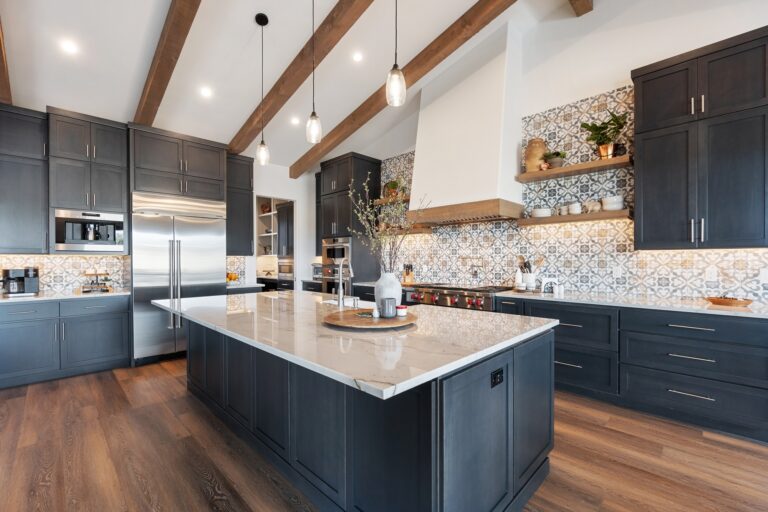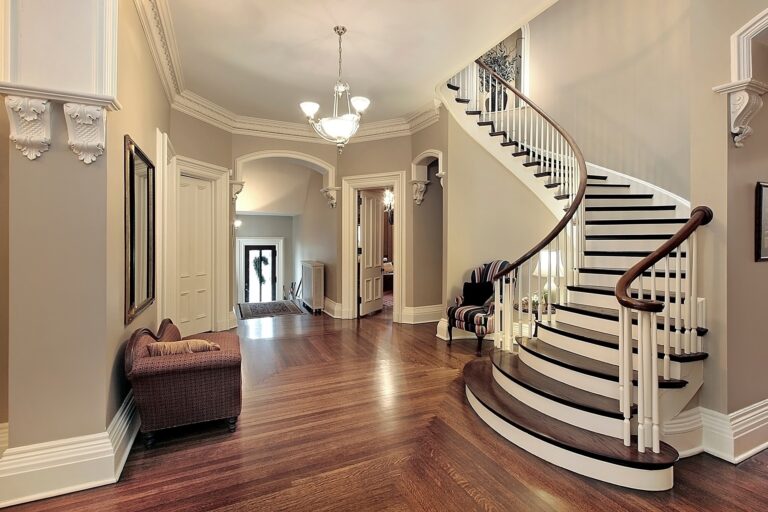With so many people working remotely these days—and the technology to make online communication and transactions seamless—it’s no surprise that more and more interior designers are branching out into the world of eDesign. This shift not only caters to a broader client base but also offers designers more flexibility and creative opportunities.
If you’re considering adding eDesign services to your arsenal of offerings, but aren’t quite sure where to begin, or what exactly it even entails, this blog post is for you. Consider this your ultimate guide to everything you need to know about eDesign—what it is, how to get started, and whether or not it’s the right choice for you and your interior design business.
Table of Contents
What is eDesign?
eDesign, short for electronic design and sometimes spelled as e-design, is exactly what it sounds like—it’s a 100% virtual approach to interior design. Unlike traditional interior design services, which involve face-to-face meetings, site visits, and hands-on coordination and implementation, eDesign is conducted entirely online. This model leverages digital tools, from all-in-one project management software programs to online shopping links, to provide clients with professional design services remotely, making it a convenient and cost-effective option.
Key features of eDesign
- Remote Consultations: All communication takes place via video calls, emails, phone, and text.
- Digital Presentations: You share all design plans, mood boards, and layouts electronically.
- Flexible Packages: Depending on their needs and budget, clients can choose from various service levels, from basic consultations to comprehensive design plans.
- DIY implementation: While some interior designers may offer heavy virtual guidance through the completion of an eDesign project, all virtual design projects will involve some element of DIY work by the client, whether that means ordering their own furnishings and/or placing and installing items in their space.
What services do eDesigners provide?
Virtual designers offer a range of services tailored to meet the needs of clients seeking virtual design solutions. Here are some the most common services eDesigners provide:
1. Virtual consultations
Clients can book online consultations to discuss their specific design needs, preferences, and budget. This virtual meeting is mutually beneficial, helping eDesigners understand the client’s vision should the project continue, while also enabling clients to receive expert design advice. Even if the virtual consultation is a one-off, it can be a quick and efficient way for designers to increase their revenue without the hands-on, time-intensive investment of an in-person project.
2. Moodboards and concept development
Instead of presenting physical moodboards, eDesigners create digital mood boards, using technology like DesignFiles’ moodboard editor, that give clients a sense of the overall theme, color palette, and style of the proposed design. This helps clients visualize the direction of the project. Virtual moodboards also provide an easy avenue for trading feedback, refining design elements, and making revisions.
3. Space planning and layouts
Using specialized software and measurements provided by the client, eDesigners develop floor plans and layouts to optimize the use of space. These plans include furniture placement, lighting, and decor arrangements.
4. Shopping lists and product recommendations
eDesigners send their clients curated shopping lists with links to purchase recommended furniture, decor, and accessories. This makes it easy for clients to source the items needed to bring their design to life. Additionally, these lists often include alternative options to accommodate different budgets and preferences. By using an interior design marketplace like SideDoor, Daniel House Club, or Designer Inc, you can earn anywhere from 15-50% commissions on every sale without having to manage the ordering process. If you prefer shopping retail, affiliate links can be used to earn a little extra on each sale. To learn more, check out our affiliate guide here.
5. 3D renderings and visualizations
Advanced eDesigners often provide 3D renderings of the proposed design, offering a realistic view of the finished space. This helps clients make informed decisions and visualize the final result. These visualizations can include different angles and lighting conditions, showcasing how the space will look at various times of the day. Interactive features, such as virtual tours or 360-degree views, allow clients to explore the design in detail. This level of detail ensures that clients feel confident and excited about the final outcome.
6. Project management and implementation guides
Some eDesigners offer project management services, guiding clients through the implementation process. This can include timelines, step-by-step instructions, and coordination with contractors if needed. They might also assist with budgeting, helping clients allocate resources effectively to avoid unexpected expenses. Regular progress updates keep clients informed and involved throughout the project. Additionally, designers can provide troubleshooting support, addressing any issues that arise during the implementation phase to ensure a smooth process.
If you opt to offer a project management service, we recommend billing hourly rather than a flat fee rate or bundling it into your design packages. Because of the unpredictable nature of managing a design project, and the range of scopes involved, the needs of each project may vary dramatically, lending itself better to hourly billing.
eDesign versus full-service design
When it comes to value, you might be wondering, where does eDesign fall in comparison with traditional full-service interior design services? Both have their unique advantages and make sense for different types of projects, budgets, and clients.
What is the difference between eDesign and full-service design?
Here, we break down the main differences between eDesign and full-service design.
eDesign
- Remote Interaction: All consultations and communications take place online.
- Cost-Effective: Generally more affordable due to lower overhead costs and flexible service packages.
- DIY Implementation: Clients often handle the purchasing and implementation of the design themselves.
- Wide Reach: Designers can work with clients from anywhere in the world.
Full-Service Design
- In-Person Meetings: Designers meet clients on-site to discuss the project, take measurements, and oversee the design process.
- Comprehensive Management: Designers manage all aspects of the project, including purchasing, scheduling, and coordinating with contractors.
- Hands-On Approach: Designers may physically move furniture, install decor, and make adjustments on-site. They’ll also work closely with contractors to ensure all installations are seamless.
- Higher Costs: Full-service design is typically more expensive due to the intensive labor and time involved.
When to hire an eDesigner
eDesign is ideal for clients who are tech-savvy, up for some DIY involvement, and seeking cost-effective design solutions. Here are some scenarios where hiring an eDesigner makes sense:
- Limited budget – If you’re on a tight budget but still want professional design advice, eDesign offers a more affordable alternative to full-service. eDesign packages can be customized to fit your financial constraints without compromising on style.
- Remote locations – For clients living in areas with limited access to local designers, eDesign provides access to talented designers from around the world. This eliminates geographical limitations and opens up a world of design possibilities.
- Smaller projects – eDesign is perfect for smaller projects, such as redesigning a single room or refreshing decor, where a full-service approach might not be necessary. It’s a great way to tackle small-scale updates without the commitment of a larger project.
- Flexible scheduling – Clients with busy schedules can benefit from the flexibility of virtual consultations and asynchronous communication. They can also implement the design plan on their own timeline, rather than sticking to a strict schedule. This approach allows clients to work at their own pace and make adjustments as needed.
When to hire a full-service designer
Full-service design is best suited for clients who prefer a hands-off approach and full project management. Consider hiring a full-service designer in the following situations:
- Large-scale renovations – For extensive renovations or new builds, a full-service designer can manage the complexities of the project, from initial planning to final execution, and help clients avoid costly mistakes along the way. Their expertise ensures that every detail is meticulously planned and executed.
- Custom or high-end designs – Clients seeking highly customized or luxury designs will benefit from the personalized attention, detailed craftsmanship, and network of vetted tradespeople that full-service designers can provide. This level of service increases the chances of a unique and high-quality project outcome.
- Lack of time or expertise – For clients who lack the time, expertise, or desire to handle design tasks themselves, like purchasing furnishings and installing items (or finding, hiring, and coordinating reliable vendors to do it for them), a full-service designer will take care of everything, ensuring a seamless process, and allowing busy clients to focus on other areas of their lives. They bring professional oversight to ensure that every element meets high standards.
- On-site coordination – For projects requiring on-site coordination with contractors, architects, and other professionals, a full-service designer provides the necessary oversight and expertise. They’ll act as the client’s liaison and advocate from start to finish, making sure their voice is heard, and removing much of the stress from an often inherently stressful process. Their presence ensures smooth communication and efficient problem-solving.
10 amazing eDesigners to Work With
Finding the right eDesigner can make a significant difference in your project’s success. Here are ten designers offering eDesign services to consider:
1. The Right Space
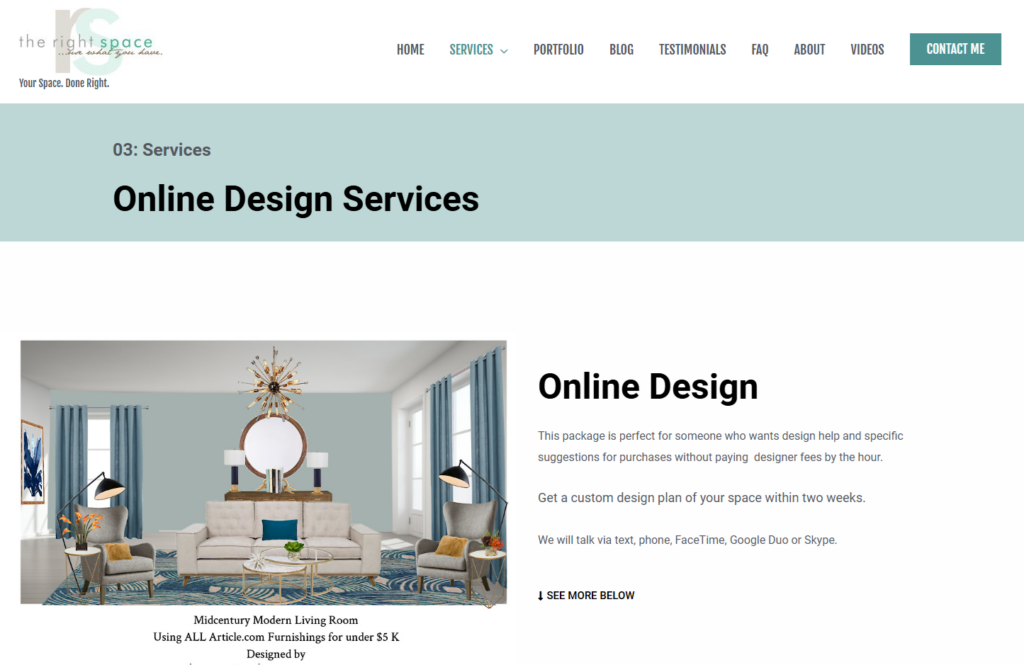
The Right Space offers custom design plans, which you’ll receive within 2 weeks. Their pricing packages start at $500/room.
2. Birdsong Design
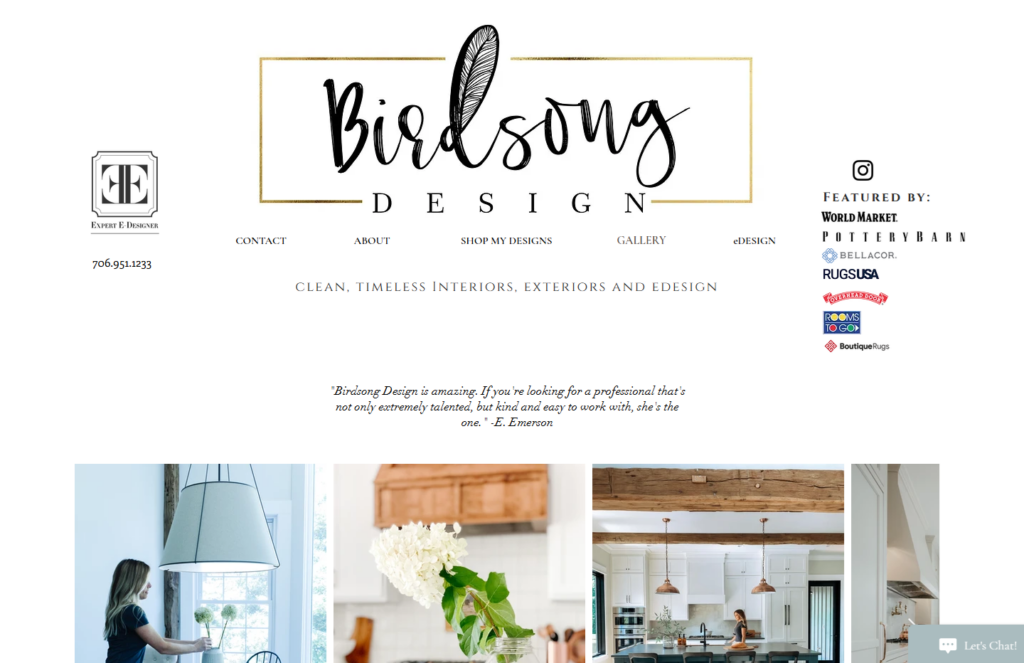
Birdsong Design’s aesthetic is clean and timeless. WIth their eDesign package, you’ll receive shopping lists, along with tips and directions for implementation.
3. Smoothy Blues Online Interiors
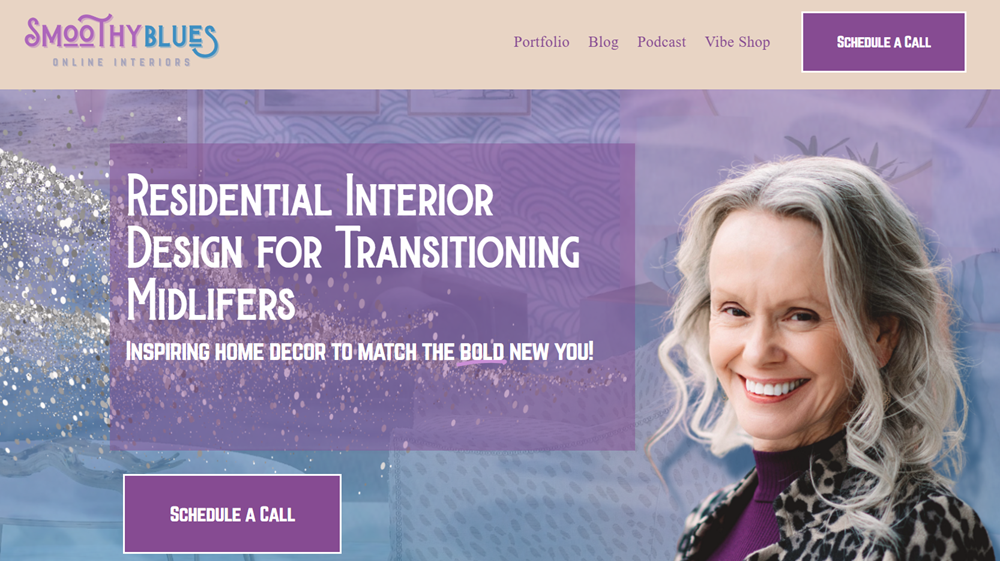
Smoothy Blues Online Interiors specializes in design for transitioning mid-lifers. Their website includes a fun “discover your style” quiz.
4. CR Interiors
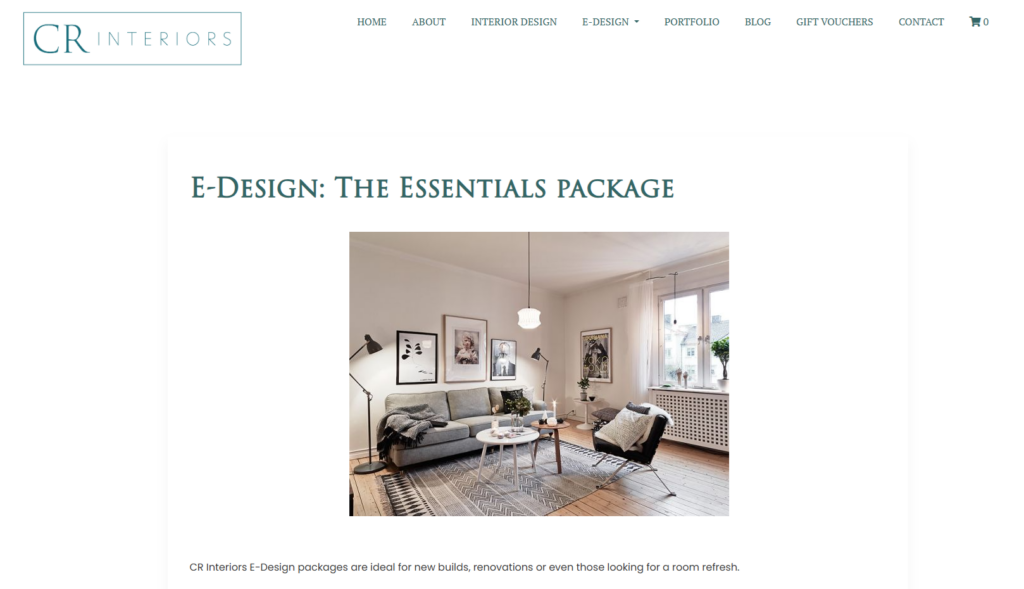
Planning to renovate, build a new home, or refresh an existing room? CR Interiors offers eDesign services for all of the above.
5. Style and Grace
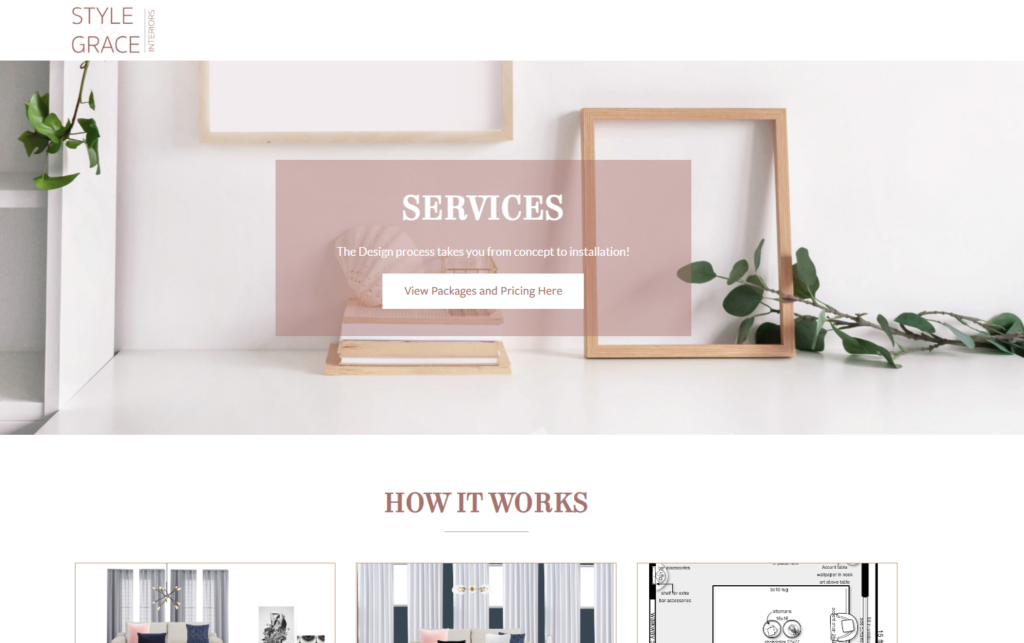
With Style and Grace, you’ll enjoy detailed guidance for bringing your personalized design plan to life. Their eDesign services take you from concept to completion.
6. Interior Eloquence
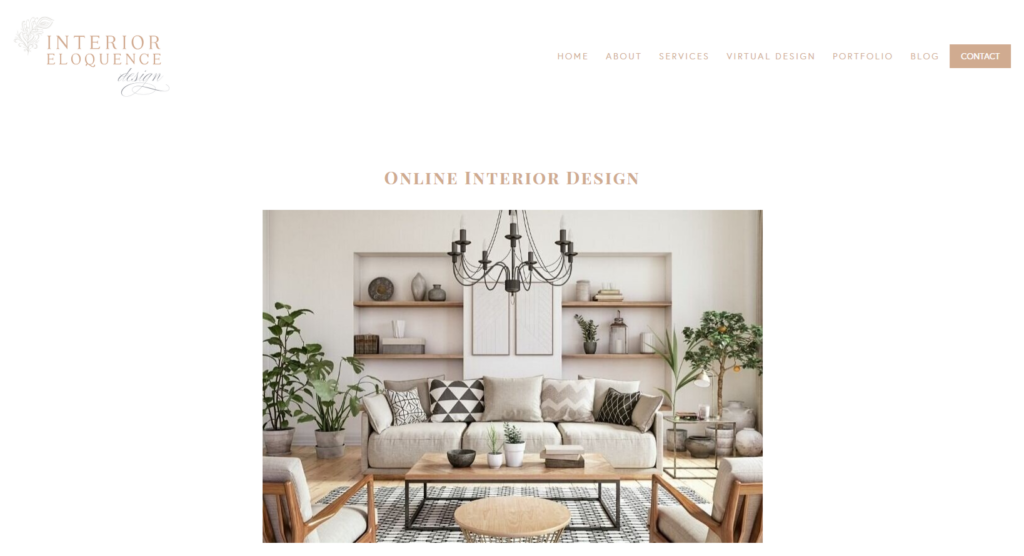
If you have limited time and a tight budget, Interior Eloquence wants to help. Their service includes design concept, floor plan, palette, and furniture/decor suggestions for a single room.
7. Nest N Style Design
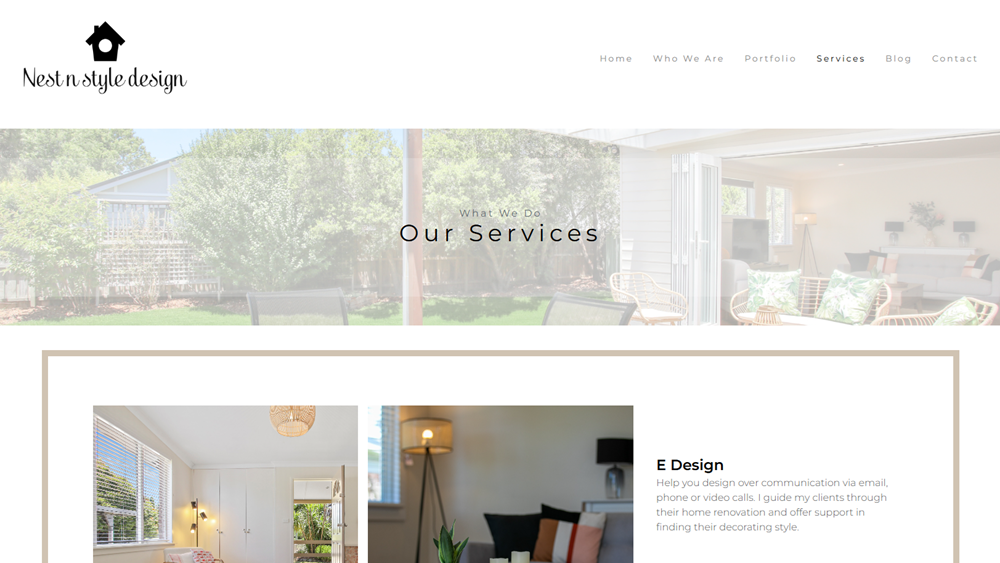
Nest N Style Design offers a versatile style and flexible options for eDesign. They’re passionate about creating modern, uplifting interiors.
8. Style Society
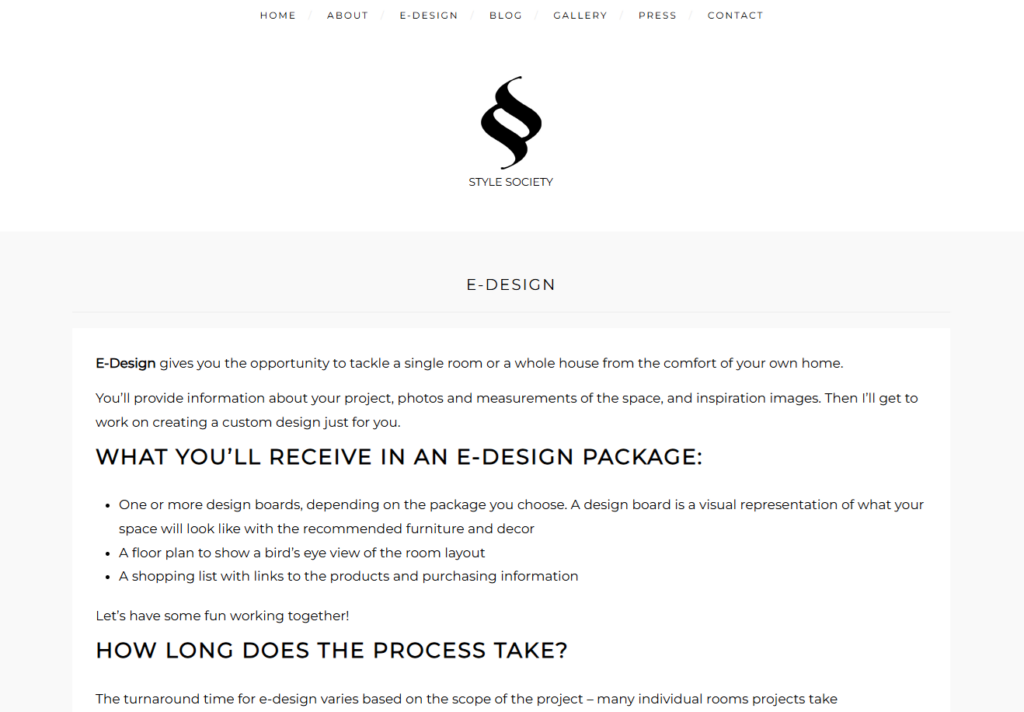
With Style Society, you can redesign a single room or an entire house. provides convenient and affordable interior design services. Their eDesign turnaround times start at 2 weeks.
9. The Luxe Interior
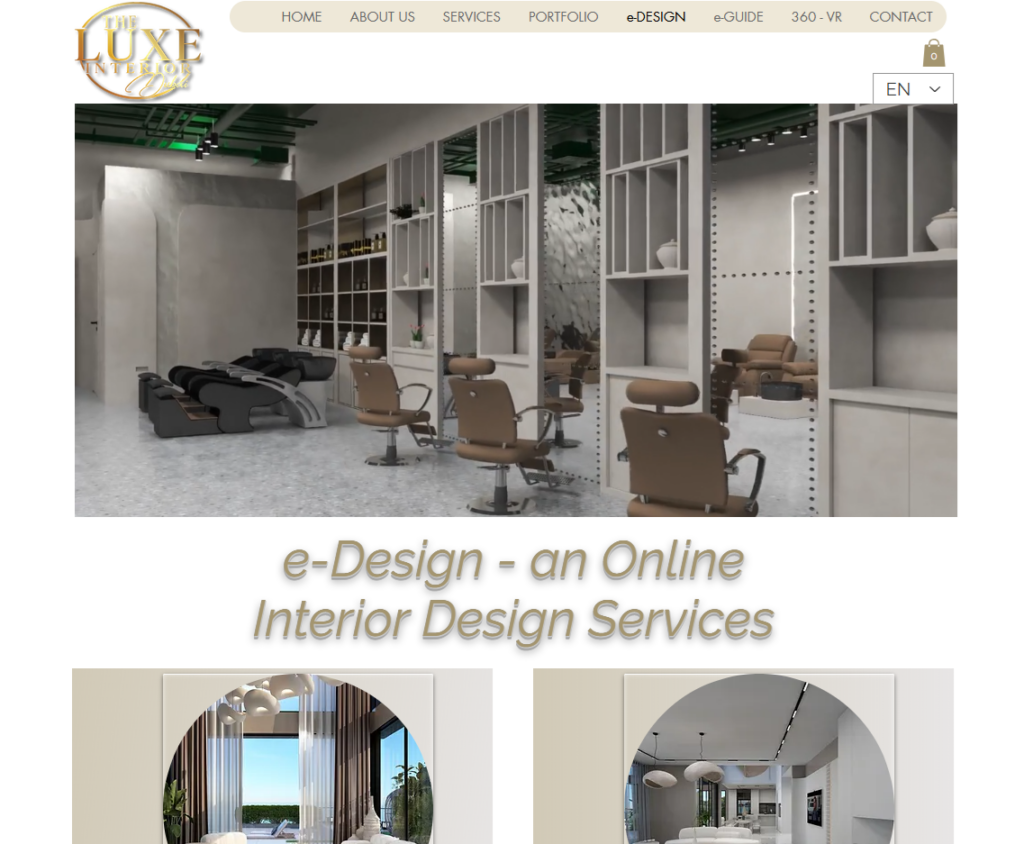
The Luxe Interior offers a minimalist, modern style with luxurious finishes. Their eDesign packages range from single room concept boards to full-service.
10. Riatte Interiors
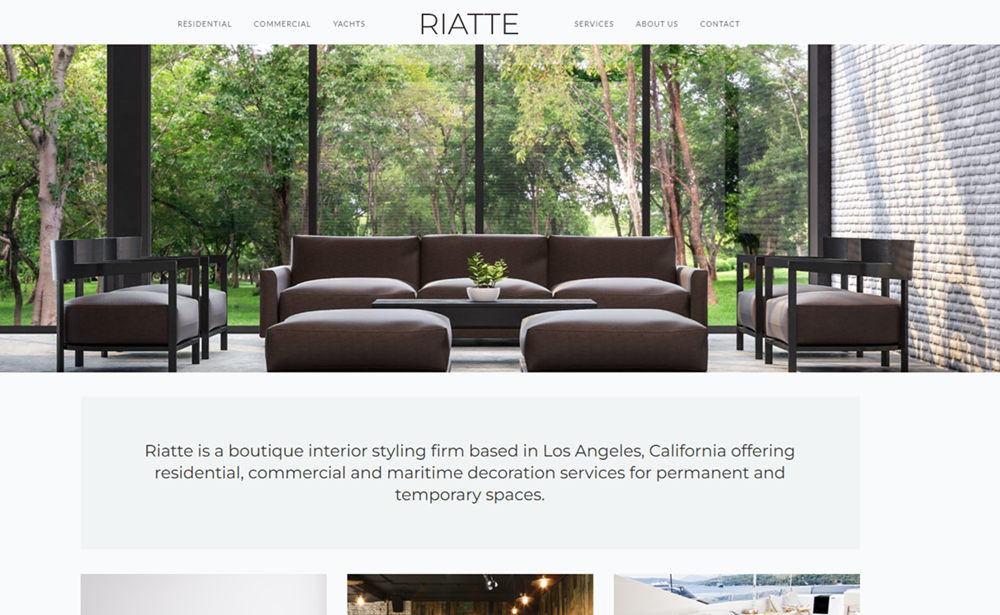
When designing 3 rooms with Riatte Interiors, you’ll enjoy 38% off plus a 4-week turnaround. Their style is cool and calming.
5 Tips for Breaking into eDesign
If you’re an interior designer looking to expand your services into the virtual realm, here are five tips to help you get started or grow your eDesign business:
1. Use an all-in-one software to run your business
Investing in the right design software can streamline your workflow and improve client experiences. DesignFiles is an all-in-one platform that offers tools for creating mood boards, floor plans, shopping lists, and more. It also facilitates client communication and project management, making it easier to handle all aspects of your eDesign business in one place. This integration saves time and allows you to focus more on the creative aspects of your work.
2. Build a strong online presence
Your website and social media profiles are your digital storefronts. Ensure they reflect your brand, showcase your portfolio, and provide clear information about your services. Regularly update your blog and social media with design tips, project updates, and client testimonials to attract and engage potential clients. Use search engine optimization (SEO) techniques to increase your online visibility and reach a wider audience.
3. Offer flexible packages
Create a range of service packages to cater to different client needs and budgets. Offering flexibility can attract a broader audience, from those seeking quick design advice to clients needing detailed design plans and support. Consider providing add-on services or a la carte options to further customize your offerings.
4. Leverage technology
Stay updated with the latest design software and tools. Using advanced technology like 3D rendering and virtual reality can enhance your presentations and provide clients with a more immersive experience. These tools can also help in creating interactive design proposals that clients can explore and modify in real-time.
5. Network and collaborate
Connect with other designers, contractors, and industry professionals to build a network of resources. Collaboration can lead to referrals, joint projects, and opportunities to expand your business. Participate in online forums, attend virtual design conferences, and join professional organizations to stay connected and informed. Building these relationships can also provide insights into industry trends and best practices.
Key takeaways
eDesign is changing the game for interior designers, offering a great way to expand your reach and diversify your services. By adding eDesign to your offerings, you can connect with clients from all over the world, offering them flexible and affordable options without compromising on creativity or excellence. Expanding into eDesign is a fantastic opportunity to grow your business and embrace the digital world, all while doing what you love. Plus, you’ll find new ways to showcase your talent and stay ahead in a rapidly evolving industry.
Get the best design and client management features with DesignFiles.

